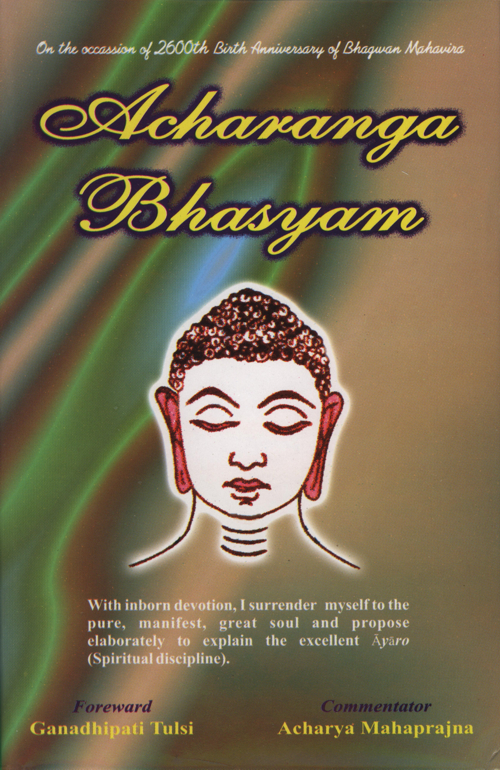8.105 jassa ṇaṃ bhikkhussa evaṃ bhavati—se gilāmi ca khalu ahaṃ imaṃsi samaṃe imaṃ sarīragaṃ aṇupuvveṇa parivahittae, se āṇupuvveṇaṃ āhāraṃ saṃvaṭṭejjā, āṇupuvveṇaṃ āhāraṃ saṃvaṭṭettā, kasāe payaṇue kiccā, samāhi- yacce phalagāvayaṭṭhī, uṭṭhāya bhikkhū abhinivvuḍacce.
It may occur to a monk: 'I am sick. At this time I am not able to maintain my body to follow my timely duties'. Such monk should gradually reduce his food. By gradually reducing his food, he reduces his passions. By reducing his passions, he should establish himself in the state of ecstacy and reduce both his body and passions like the plank of wood chiselled on both sides. Thus reduced, the monk should prepare for tranquil death and make his body calm and quiet.
Bhāṣyaṃ Sūtra 105
The ascetic who is attacked by sickness feels like this - I am unable to bear this body for regularly practising compulsory duties. Such monk should gradually reduce his food. This way of attrition practised for death through meditation has been propounded by the Sūtra. The reduction of food is the first step towards the attrition.[1] The second step is the thining of the passions. The reduction of food is the physical attrition. The thining of the passion is spiritual attrition. On this topic, the opinion of the Cūrṇi is this - an ascetic is ordinarly engaged in thining his passions, but he reduces them specially at the time of attrition; some monk destroys all his passions.[2]
The third step is abandonment of the body. This is intended by the expression 'with tranquillized body or state of the mind'. 'Tranquillized body' means guarded body. 'Tranquillized state of mind, means the condition of the spiritual colouring'.[3]
The fourth step is equanimity, which is like the state of the soul that bears the cutting by the axe and smearing by sandal paste with equal tranquillity. The equanimity has been expressed by the phrase 'a plank of wood being chiselled on both sides'.[4] As a log of wood cut out both ways, outside and inside becomes worn out, so an ascetic whose external body or the internal passions are attenuated is called as beyond sorrow and pleasure and is like a plank of wood chiselled on both sides. Such ascetic, having risen up, has his body pacified, he is possessed of tranquillized body.[5]
The first four years - Vikṛti-parityāga (i.e. abandonment of rich food) or ācāmla (i.e. eating only a single item of food). The next four years - Special penace such as fasting for a day, for two days for three days etc. and taking appropriate breakfast. The 9th and 10th years - Fasting on alternate days and scsmla in breakfast.
The first half of the 11th year - fasting for one day and two days. The second half of the 11th year - Severer penances such as fasting for three or four days or more days.
During the whole of the 11th year, the ācāmla in breakfast. In the first six months reduced diet on the day of ācāmla and a full diet on such occasions is permissible during the next six months of the 11th year.
During the 12th year—Ācāmla caupled with another penance, i.e. either continuous acamla or scsmla with another penance alternately.
At the end of the 12th year—Fasting for a fortnight or a whole month or Bhakla Pratyākhyāna, etc. In the Ralnakaranda-Śravakācāra, we get the order of curtailment in diet as follows: First, cereals are given up; one practises to take only mild. Then, mild is also given up and only buttermilk or hot water is taken. Then, according to one's capacity, gradually fasting is taken up and water is also given up. (see for details, Uttarajjhayanāṇi, 30.12,13 - annotation).
According to the Niśītha Cūrṇi, taking food is reduced in such a way that complete abandonment of food and death coincide. During the last four months of this year, the mouth is kept oiled so that the speech-organs do not cease to function and there is no difficulty in reciting the namaskāramantra etc (Uttarajjhayanāṇi, vol. II, notes, pp.263-264).
(b) Scrupulous diminution of passions.
(c) Keeping the body in a state of stillness. Exertion (utthāna or vigorous perparation for something) is of three kinds.(a) Exertion in self-discipline - to get initiated into ascetic life.
(b) Exertion in movement from village to village
(c) Exertion in the attainment of Death Sublime through gradual emaciation of the body (saṃlekhanā) on experiencing infirmity.
 Acharya Mahaprajna
Acharya Mahaprajna

